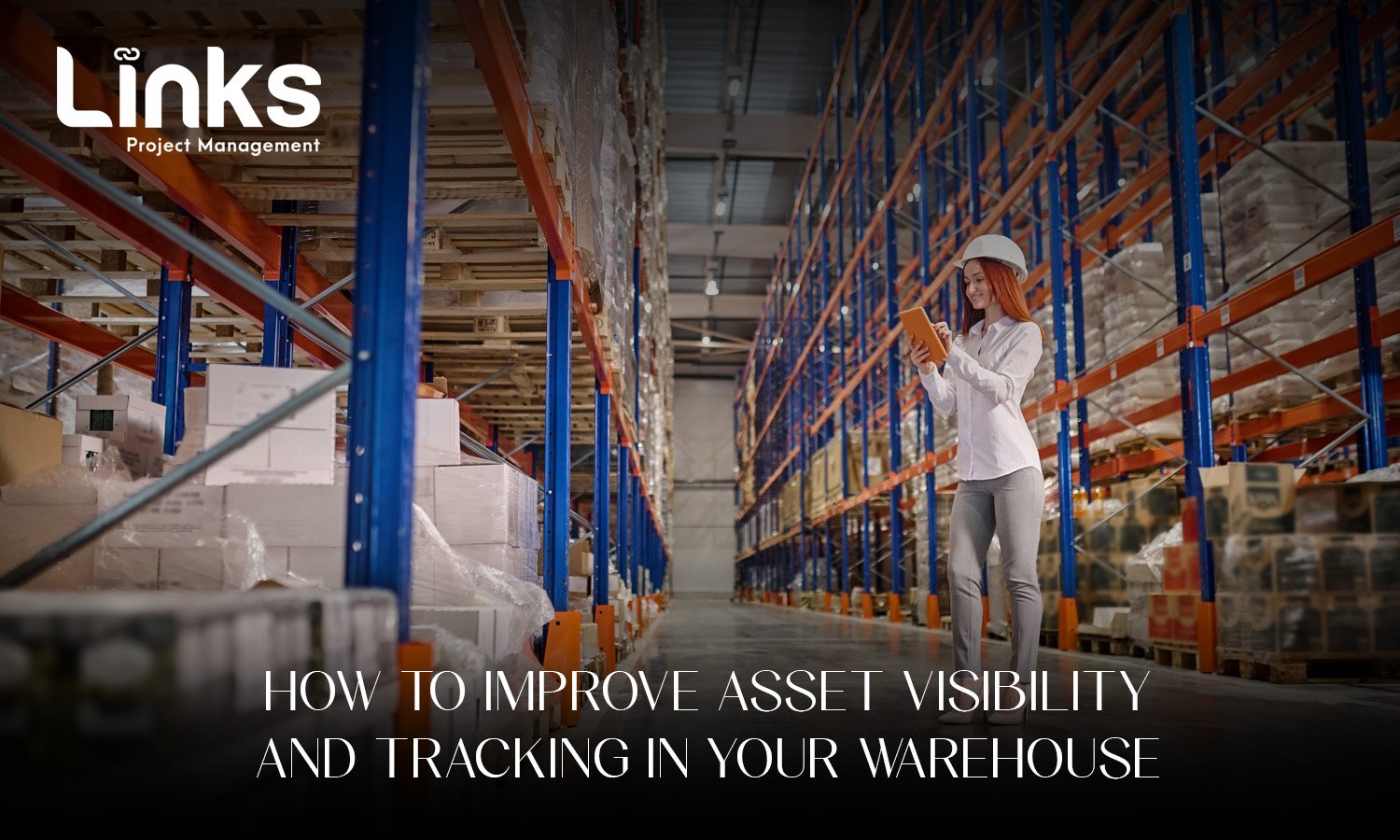
For warehouses, improving asset visibility and tracking can lead to significant gains in productivity, cost savings, and accuracy. Here we will explore technologies and techniques to enhance asset visibility and tracking in your warehouse, helping you streamline operations and make more informed decisions.
Asset Visibility and Tracking
Asset visibility refers to the ability to see and monitor the location, status, and condition of assets throughout their lifecycle. Tracking, on the other hand, involves capturing and recording data related to these assets. Together, these elements ensure that assets are accounted for, optimally utilized, and efficiently managed.
1. Implementing Barcode Systems
Barcodes are one of the most widely used technologies for asset tracking in warehouses. Each asset is assigned a unique barcode label that can be scanned using a barcode reader or mobile device.
Ensure all assets are labeled clearly and consistently, and frequently scan them to update their status and location in the system.
Benefits:
- Cost-Effective: Barcode systems are relatively inexpensive to implement and maintain.
- Ease of Use: Barcodes are simple to scan and integrate with existing warehouse management systems (WMS).
2.Leveraging RFID Technology
Radio Frequency Identification (RFID) technology uses radio waves to automatically identify and track tags attached to assets. Unlike barcodes, RFID does not require a direct line of sight to read the tags, making it suitable for tracking assets in various conditions.
Ensure RFID tags are placed in optimal locations on assets for accurate readings and periodically check and maintain RFID readers and tags to ensure functionality.
Benefits:
- Real-Time Tracking: RFID enables real-time tracking and monitoring of assets.
- Increased Efficiency: Reduces the need for manual scanning and can handle multiple tags simultaneously.
Utilizing IoT and Smart Sensors
Internet of Things (IoT) and smart sensors allow for advanced monitoring of assets by connecting them to the internet and collecting data on their condition, location, and usage.
Ensure IoT devices are integrated with your WMS for seamless data flow and implement robust security measures to protect sensitive data collected from these devices.
Benefits:
- Enhanced Data Collection: Provides detailed insights into asset performance and environmental conditions.
- Predictive Maintenance: Enables predictive analytics to foresee and address maintenance needs before failures occur.
Adopting Cloud-Based Asset Management Systems
Cloud-based asset management systems offer centralized and scalable solutions for managing asset data, accessible from anywhere with an internet connection. Select a cloud solution that aligns with your warehouse needs and integrates with existing systems, and ensure data is regularly backed up to prevent loss.
Benefits:
- Accessibility: Allows for remote access to asset information and real-time updates.
- Scalability: Easily adapts to growing asset volumes and changes in warehouse operations.
Implementing GPS Tracking
Global Positioning System (GPS) tracking provides precise location data for assets, particularly useful for high-value or mobile assets that move between locations. Integrate GPS tracking with your asset management system for comprehensive visibility and regularly monitor GPS data to track asset movements and prevent anomalies.
Benefits:
- Location Accuracy: Provides accurate real-time location data, helping to reduce loss and theft.
- Route Optimization: Enables optimization of asset routes and logistics.
Employing Asset Management Software
Asset management software integrates various tracking technologies and provides a unified platform for managing asset data. This software often includes features such as real-time tracking, reporting, and analytics.
Customize the software to fit your warehouse’s specific needs and workflows, and provide adequate training for staff to use it effectively.
Benefits:
- Centralized Data: Consolidates asset information from multiple sources into a single interface.
- Advanced Reporting: Offers advanced reporting tools for better decision-making.
Using Drones for Inventory Management
Drones equipped with cameras and sensors can be used for aerial inventory checks, offering a bird’s-eye view of the warehouse.
Ensure compliance with regulations related to drone usage in industrial settings and periodically calibrate drones to maintain accuracy in data collection.
Benefits:
- Efficient Inventory Checks: Speeds up inventory counts and reduces manual labor.
- Enhanced Coverage: Provides a comprehensive view of large warehouse spaces.
Incorporating Real-Time Analytics
Real-time analytics involves analyzing data as it is collected to provide immediate insights into asset performance and status.
Integrate real-time analytics with your asset management system for comprehensive insights and focus on actionable insights that can drive improvements in asset management.
Benefits:
- Informed Decisions: Enables quick decision-making based on current data.
- Issue Detection: Helps in early detection of potential issues and anomalies.
Enhancing Staff Training and Engagement
Training and engagement of warehouse staff are crucial for effective asset management. Ensuring that employees are knowledgeable about asset tracking technologies and procedures can greatly enhance visibility and tracking.
Provide regular training updates as new technologies and procedures are introduced and implement a feedback mechanism to continuously improve asset management practices.
Benefits:
- Improved Accuracy: Well-trained staff can accurately handle and track assets.
- Increased Efficiency: Engaged employees are more likely to follow best practices and use technology effectively.
Conducting Regular Audits
Regular audits involve systematically reviewing asset records, physical counts, and tracking systems to ensure accuracy and compliance. Conduct audits at regular intervals to maintain accuracy and accountability, and leverage technology to streamline the audit process and reduce manual effort.
Benefits:
- Data Accuracy: Helps to verify the accuracy of asset data and rectify discrepancies.
- Process Improvement: Identifies areas for improvement in asset tracking and management processes.
Improving asset visibility and tracking in your warehouse necessitates a blend of advanced technologies, best practices, and active staff engagement. By adopting barcode systems, RFID technology, IoT sensors, and other cutting-edge solutions, you can significantly enhance your warehouse operations, cut costs, and boost overall efficiency. Regular audits and ongoing training are also essential to ensure that your asset management practices stay effective and responsive to evolving needs.
For best solutions and expert guidance in asset management, consider partnering with Links Project Management, one of the leading asset management companies in Dubai. With our expertise, you will be well-equipped to achieve optimal asset management and propel your warehouse’s success.
